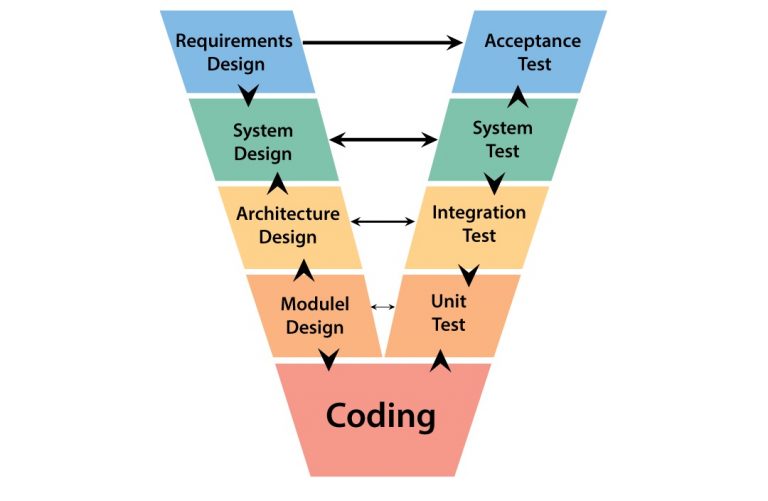
Anoma offers full-cycle Manual / Functional software testing and quality assurance services for desktop and mobile applications.
Expert test engineers are an integral part of every project we work on to ensure the deliverables meet the most stringent quality standards.
We also leverage our QA talent pool to provide standalone software testing services by means of custom dedicated QA teams. A dedicated team reports directly to the client, and works exclusively on a single project, closely collaborating with the client’s staff. This approach has proven very effective for mid- and long-term projects that require ultimate resource scala

Anoma recommends V-model
V-model is a step-by-step process in which the next phase begins only after the completion of the present phase. The steps in this process do not move in a linear way. Instead, the steps in this process are bent upwards. When this model is compared with the waterfall model, there are larger chances of emphasizing on products testing.
If this model is used to test a product, there is an assurance that the final product developed will be of high quality.
Phases of V-Model
The phases of V-model includes verification, coding, and validation that are further divided into different stages.
1) Verification phase:
The verification phase of V-model includes business requirement analysis, system design, architectural design, and module design.
- Business requirement analysis is the stage of having a detailed communication with the customer so that it gets easier to understand and comprehend his/her exact requirements. It is beneficial to complete acceptance test design planning at this stage.
- System design stage involves understanding and detailing out the entire hardware and communication setup for the product being developed. System test design can also be planned at this stage.
- Architectural design stage involves understanding the technical and financial feasibility of the product before it is actually developed. The focus is to understand the data transfer that will take place between internal and external modules.
- Module design stage focuses on designing a detailed plan for the internal modules of the system. Also known as low-level design (LLD), it is important to ensure that the design is compatible with other modules in system architecture and other external systems.
2) Coding Phase:
During this phase, the actual coding of the system modules is taken up. On the basis of system and architectural requirements of the program, the best suitable programming language is selected using which the coding is done at par with the coding guidelines and standards. The code is then reviewed and optimized to ensure the delivery of best performing product.
3) Validation phase:
During this phase, the product undergoes various forms of testing.
- Unit testing is conducted at an early stage so that the bugs are eliminated at the starting stages of product development.
- Integration testing is done to check whether there is a valid and proper communication within the internal modules of the system.
- System testing enables the testing of the entire system and to ensure if the internal modules communicate effectively with the external systems.
- Acceptance testing is done to test a product in the user’s environment and to check if it’s compatible with the other systems available in the environment.
